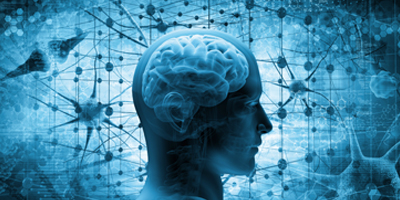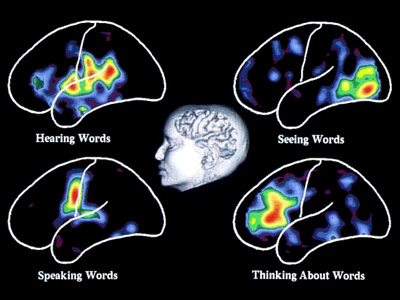Do you love to read? Have you ever read a series made up of multiple books, such as the "Harry Potter" series?
Your brain interprets those written letters in a "Harry Potter" book as words and builds those words into a story! It weaves together your memories of the earlier installments into new adventures, making the series an exciting ride from start to finish.
In addition to reading, understanding and remembering, your brain enables you to plan, to make decisions and to recognize people, pets and places. Your brain also controls your movements and activities like breathing and your heartbeat.
The source of brain power
 Your brain gets much of its power from 100 billion nerve cells, or neurons (NUR-awhns), that control reading, remembering, deciding, moving your body and other activities that involve thinking and planning. Nerve cells share information at 100 trillion tiny connections called synapses (SIH-nap-sez). These connections form networks that are more complex than any computer.
Your brain gets much of its power from 100 billion nerve cells, or neurons (NUR-awhns), that control reading, remembering, deciding, moving your body and other activities that involve thinking and planning. Nerve cells share information at 100 trillion tiny connections called synapses (SIH-nap-sez). These connections form networks that are more complex than any computer.
At these connections, nerve cells communicate using tiny electrical signals and pulses of special messenger chemicals. Your brain codes everything you know in patterns of nerve cell connections and the strength of the cell-to-cell signals. Learning something creates a new pattern of connections and makes certain signals stronger.
At every moment of the day or night, millions of messages are speeding through your nerve cell communication pathways, enabling your brain to receive, process and store information and to send instructions all over your body.
 These images use a special kind of X ray called a positron emission tomography (PET) scan to show areas of the left side of the brain that are active while people perform language tasks. The white line is a rough outline of the left-side view of the brain. Nerve cells involved in each task are working hardest where an image is red. Nerve cell activity decreases as the colors progress through the rainbow from red to violet. Black areas are not involved in these tasks.
These images use a special kind of X ray called a positron emission tomography (PET) scan to show areas of the left side of the brain that are active while people perform language tasks. The white line is a rough outline of the left-side view of the brain. Nerve cells involved in each task are working hardest where an image is red. Nerve cell activity decreases as the colors progress through the rainbow from red to violet. Black areas are not involved in these tasks.
When brain power fails
Like any other body organ, the brain can break down. One of the most common brain disorders that people can develop as they age is Alzheimer’s (AWLS-high-murz) disease. You may have a relative or older friend with Alzheimer’s. It strikes about one-tenth of people over 65 years old and almost one-half of those who live past 85.
In Alzheimer’s disease, brain cells lose their ability to form new connections with other cells. Supplies of messenger chemicals also decline. These losses make it hard for people to learn new information.
Existing nerve cell connections also disappear and information stored in them fades. People with Alzheimer’s disease have problems recalling the names of friends or titles of beloved books. They forget who is president of the United States, how to pay bills and other important information.
As the disease gets worse, nerve cells begin to die. The death of nerve cells destroys the brain’s ability to understand the world. People with Alzheimer’s may want to avoid excitement and being around too many people, even at holidays and family gatherings. When they grow confused or frightened they may cry or become angry because their surroundings no longer make sense to them.
Eventually, widespread cell death erases the most basic knowledge stored in the brain. People lose their ability to recognize family and friends and even forget who they are and where they live.
In its latest stages, Alzheimer’s disease destroys brain cells that control moving and swallowing. People at these stages need constant care. Eventually they die from Alzheimer’s disease.
No one yet knows why or exactly how Alzheimer’s disease destroys brain cells, but scientists worldwide are working to solve the mystery. Everyone affected by the disease would like to close the book on Alzheimer’s. Perhaps during your lifetime we will be lucky enough to see the end of the sad Alzheimer's story.